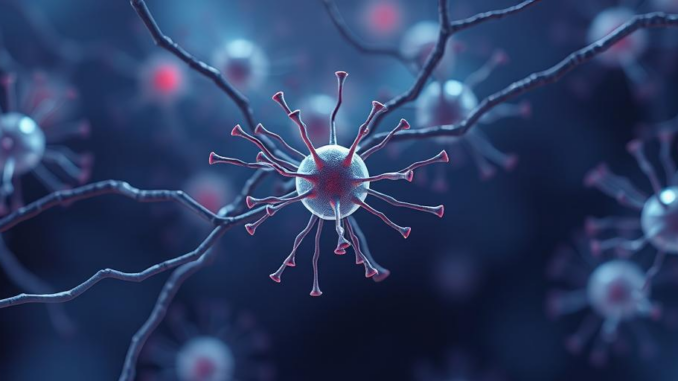
Summary
This article explores a groundbreaking Phase 1 clinical trial for Parkinson’s disease using a novel stem-cell treatment. Researchers reprogram a patient’s stem cells to replace dopamine-producing neurons damaged by the disease. The trial aims to evaluate the safety and feasibility of this approach, potentially revolutionizing Parkinson’s treatment.
Secure patient data with ease. See how TrueNAS offers self-healing data protection.
** Main Story**
Parkinson’s Breakthrough? Maybe. Let’s Talk About It.
We might be on the cusp of a new era in the fight against Parkinson’s. Mass General Brigham just launched a Phase 1 clinical trial that’s pretty darn exciting. They’re pioneering a stem-cell treatment that could be a game-changer. Basically, they’re reprogramming a patient’s own stem cells to replace those dopamine-producing brain cells that Parkinson’s attacks. Imagine that, restoring lost function! It’s a huge leap from just managing symptoms, wouldn’t you agree?
Trial Focus: Is It Safe? Does It Work? (Well, Kinda Early to Tell)
Now, this is a Phase 1 trial, so safety and feasibility are the main things we’re looking at. Six participants, three of whom have already gotten the treatment at Brigham and Women’s Hospital, will be closely monitored for a year, maybe even longer. Researchers are tracking everything – any side effects, improvements in symptoms…the whole shebang.
From Your Blood to Your Brain: A Stem Cell’s Journey
The treatment itself? It’s a complex process, no getting around it. Think of it like this: they harvest stem cells from the patient’s blood. Then, they transform them into induced pluripotent stem cells, or iPSCs. After that, using some seriously cutting-edge tech, they reprogram those iPSCs into dopamine-producing neurons. And these new neurons, they’re ready to be transplanted back into the patient’s brain, ready to replace the damaged cells and get that dopamine flowing again. It’s pretty cool, right?
A New Paradigm for Treatment, Hopefully
Because they’re using the patient’s own cells – it’s called autologous transplantation – they can skip the immunosuppressant drugs that you usually need with donor cells. That’s a big win. It simplifies things and reduces the risk of complications. And it really could be a paradigm shift, moving beyond symptom control and towards actually restoring what’s been lost. I mean, how awesome would that be?
Hope for the Future, Backed by Decades of Work
Decades of preclinical work at McLean Hospital’s Neuroregeneration Research Institute (NRI) paved the way for this. Seriously, decades. Led by Dr. Ole Isacson, a real heavyweight in Parkinson’s research, the team’s work has finally led to this human trial. It’s bringing a lot of hope to people living with Parkinson’s, and rightly so. Because, honestly, they deserve some good news.
Looking Ahead: Phase 2 and Beyond
Once Phase 1 wraps up, the plan is to move into a Phase 2A trial. More participants, more data, and a deeper look at how well the treatment actually works. The National Institutes of Health is funding it, which is great news. It’s a real collaboration between science and clinical application. As the trial moves forward, it really could change the game for Parkinson’s treatment. That said, let’s not get ahead of ourselves. It’s still early days.
Decades of Research: A Pivotal Moment
This trial is the result of more than thirty years of research from Dr. Ole Isacson and his team. Their groundbreaking work in cell therapy? It’s the foundation for this whole innovative approach. So, yeah, going from the lab to the clinic is a huge moment. It shows what translational research can do, bringing new treatments to the people who need them most.
A Glimpse into the Future of Geriatric Care: More Than Just Parkinson’s
This stem-cell trial shows how much potential there is in geriatric care. I mean, as the population ages, we’re going to need effective treatments for neurodegenerative diseases like Parkinson’s. This trial? It’s a glimpse into a future where cell-based therapies are central to restoring function and improving the quality of life for older adults. And that’s something we should all be paying attention to.
Beyond Parkinson’s: Other Neurological Diseases
If this trial succeeds, it could have a huge impact beyond Parkinson’s. The thinking is that this approach could lead to cell therapies for other neurological disorders like Alzheimer’s, Huntington’s, even spinal cord injuries. So, the innovative use of these stem cells? It’s a big step towards a future where regenerative medicine transforms neurological care. Let’s hope it lives up to the hype, for so many reasons.


The autologous transplantation aspect is compelling, potentially minimizing the risks associated with immunosuppression. I wonder if this approach could be adapted to address other conditions currently requiring donor-dependent transplants.
That’s a fantastic point! The potential to adapt this autologous approach for other donor-dependent transplants is definitely something to consider. Imagine the possibilities for patients needing organ or tissue replacements! Further research in this direction could revolutionize transplant medicine.
Editor: MedTechNews.Uk
Thank you to our Sponsor Esdebe
The potential for personalized medicine, using a patient’s own cells, is a significant advancement. Exploring methods to enhance the efficiency of iPSC reprogramming could further optimize treatment outcomes.
Absolutely! The efficiency of iPSC reprogramming is key. Optimizing that process could not only improve treatment outcomes but also potentially lower costs, making this therapy more accessible. Thanks for highlighting that important point!
Editor: MedTechNews.Uk
Thank you to our Sponsor Esdebe